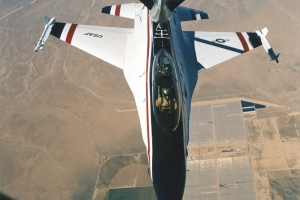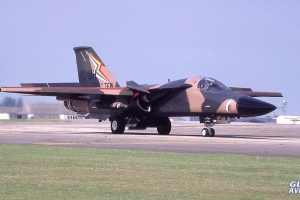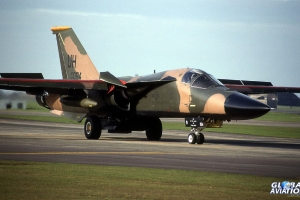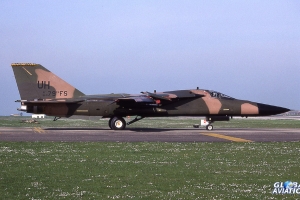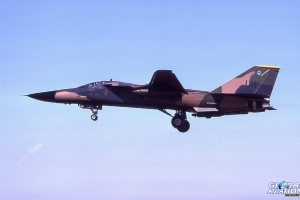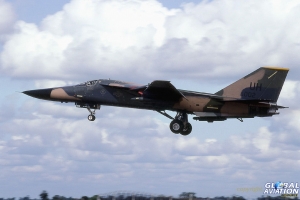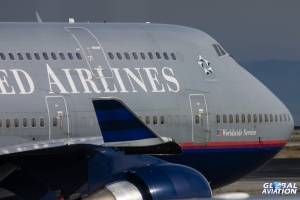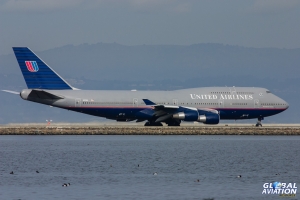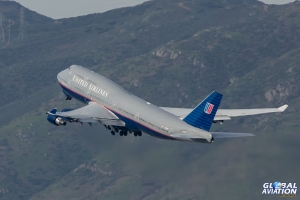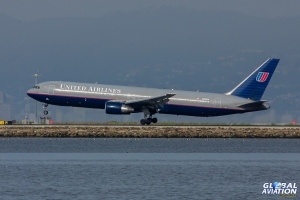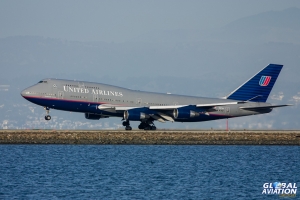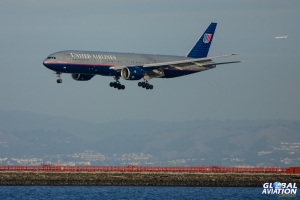Mike Gerzanics’ aviation career has been varied if nothing else. Be it piloting the F-111, test flying F-16s or flying airliners for Southwest, his experiences have been far from average. Rob Edgcumbe sat down with Mike to discuss his ongoing aviation life.
“May you live in interesting times” is purportedly a Chinese curse. While the veracity of that is questionable, the sentiment is clear. As a pilot, the chances of interesting times are enhanced. Certainly, the saying applies to one guy. If you read Flight International magazine, you might occasionally see flight test reports on new airliners and business jets. The regular reviewer for these aircraft is a guy called Mike Gerzanics. His reviews of the aircraft provide a combination of technical information and personal impressions that are a result of extensive test flying experience. This is but the latest step in a flying career that has taken Mike to many interesting places and put him in a wide variety of types.
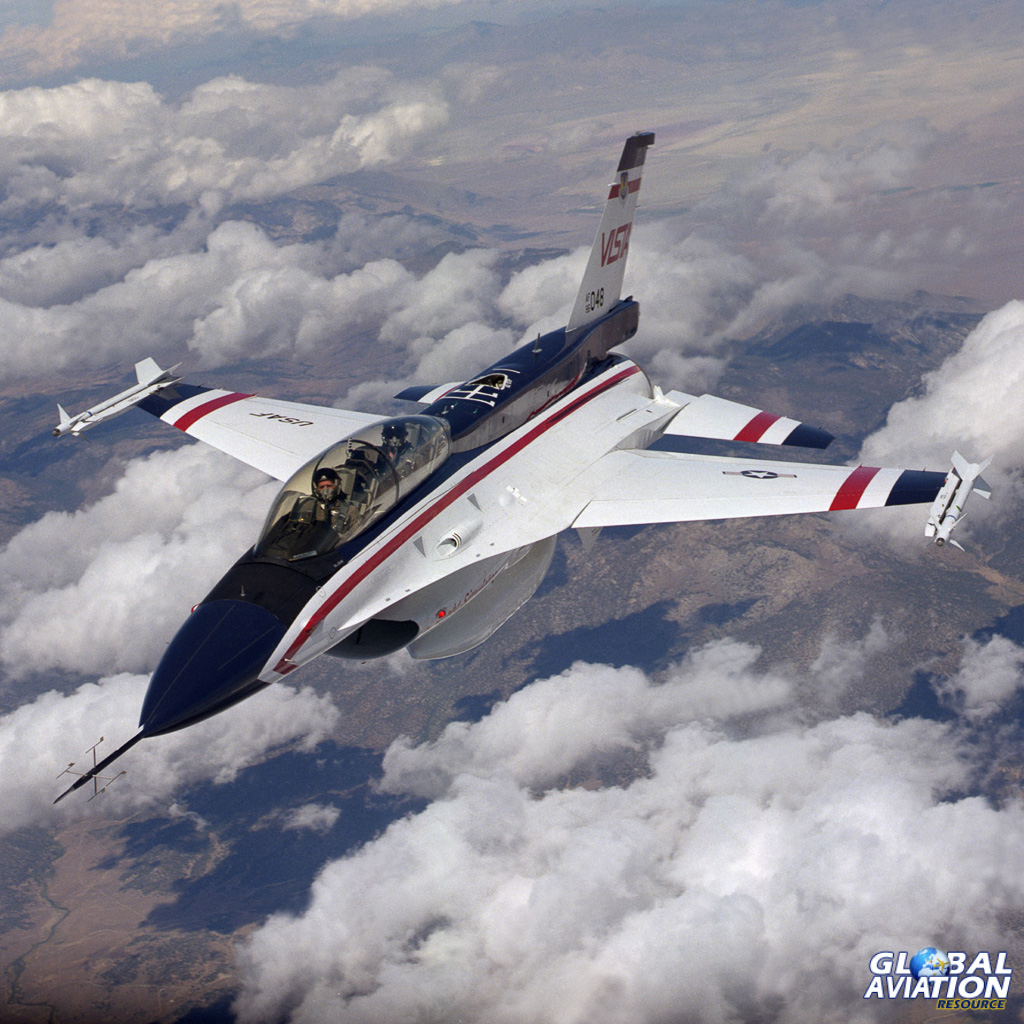
The MATV VISTA F-16 in flight. Lockheed Martin photo by Tom Reynolds
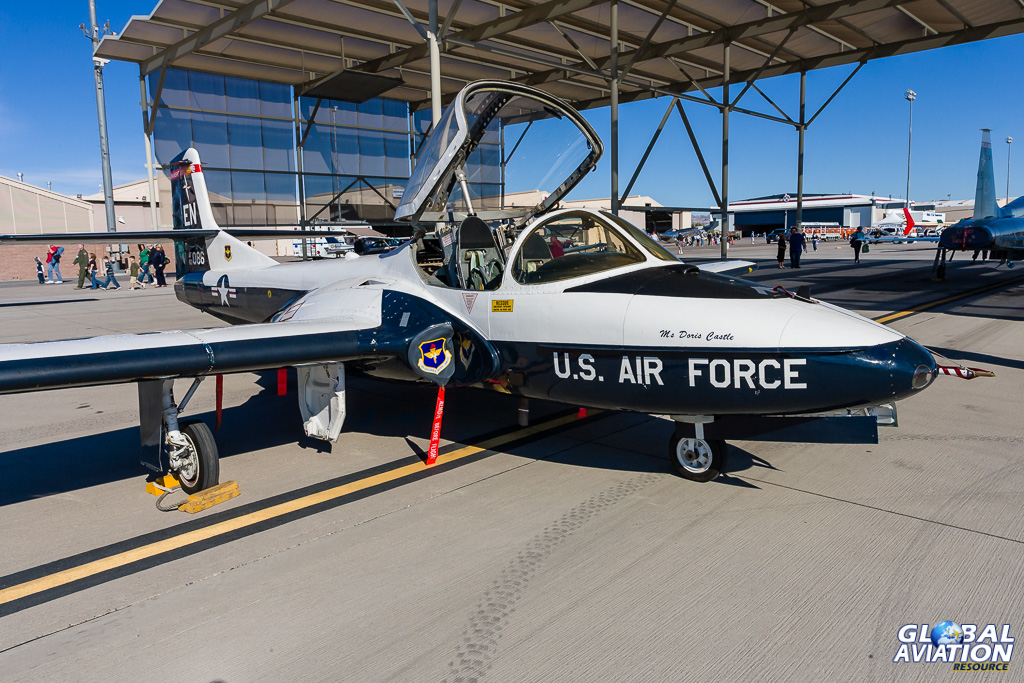
A T-37 Tweet on the ramp at Nellis AFB. © Global Aviation Resource – Rob Edgcumbe.

A T-38 Talon from Columbus AFB at Andrews AFB for the Joint Service Open House in 1994. © Global Aviation Resource – Rob Edgcumbe.
Growing up in a suburb of Pontiac, Michigan, Mike was not the product of an aviation family. However, he decided at an early age that he was going to be a pilot. A diet of aviation movies and books had inspired the notion that being a knight of the skies was the only way to be. As he jokingly puts it may years later, “A blue collar kid from Detroit tries to rise above!”
Mike grabbed whatever opportunities there were to fly. He joined the Civil Air Patrol but a more practical opportunity came from a friend of his family. He had been in the service and was a qualified instructor. He told Mike that he would teach him to fly for free provided Mike came up with an aircraft. The local grocery store was a source of work so Mike put his pay into aircraft rentals. He soloed at 16 in a Cessna 150 and had his licence at 17. All the time, he knew that he wanted a career in flying and while there were many options to achieve that, he really wanted to be a fighter pilot. That was the only way to go.
While a number of college options were available to him, Mike was accepted into the Air Force Academy at Colorado Springs. Part of the Class of 1980, his natural mathematical and engineering aptitude was developed. However, he took a slightly unusual turn in his options while at the academy. Flying and soaring were options that could be taken but there was something more unusual too: falconry! The academy had falcons that were flown at events and there was a team of students that looked after them. As Mike recalls, “Hopefully I would be flying airplanes for a career but I probably wouldn’t have another chance to do falconry.”
The falcons were flown for training four times a week and at football games. However, you would not get to look after your own falcon straight away. As with many things, you have to serve your apprenticeship. Initially Mike was responsible for managing the chickens. Cleaning out their coop as part of the duties. The reason for the chickens? You have to feed the falcons of course. Only in the later years, after he had served his apprenticeship cleaning out the chickens, did he get to keep a falcon and fly it at the events. Flying was not neglected at the academy though, and soaring experience was gained which would have some relevance many years later at test pilot school.
Upon graduation from the Academy, Mike headed for pilot training. There was flight screening on T-41s at the Academy but, with his license already achieved, this was more about making sure you did things the way the Air Force wanted. From there it was on to Columbus AFB in Mississippi for basic and advanced training on T-37 and T-38 jets. Having demonstrated the competence for fighters, it was on to fighter lead in training at Holloman AFB, again on the T-38, and then it was time for conversion to his first operational jet. The jet he went to was the F-111 and conversion was carried out at Mountain Home AFB. Mike then crossed the Atlantic to his first operational squadron – the 79th, flying the F-111E at RAF Upper Heyford as part of the 20th TFW.
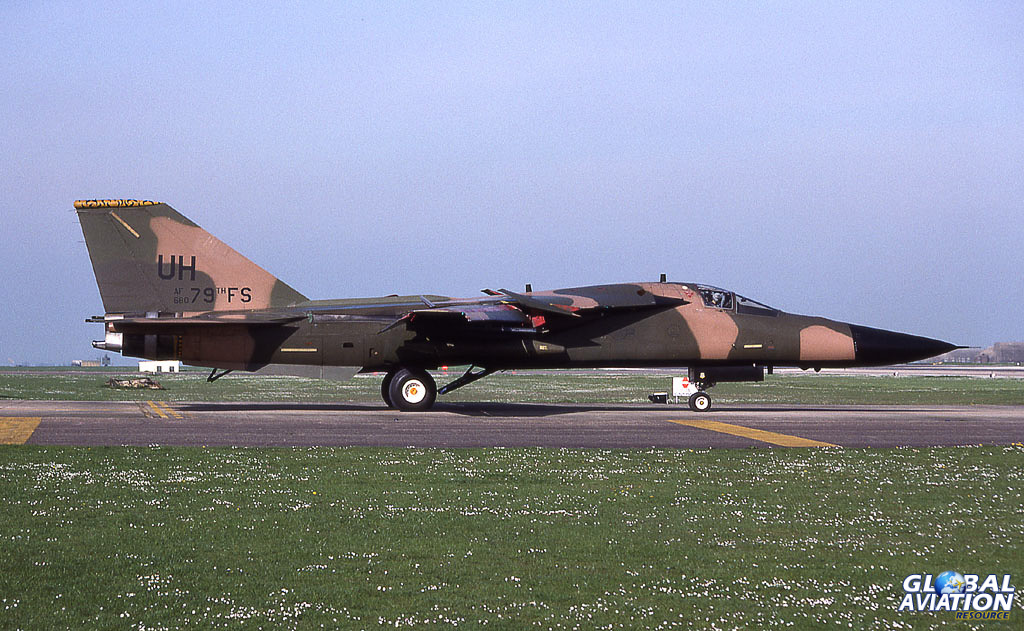
A 79th Fighter Squadron F-111E at RAF Upper Heyford. © Global Aviation Resource – Kevin Wills.
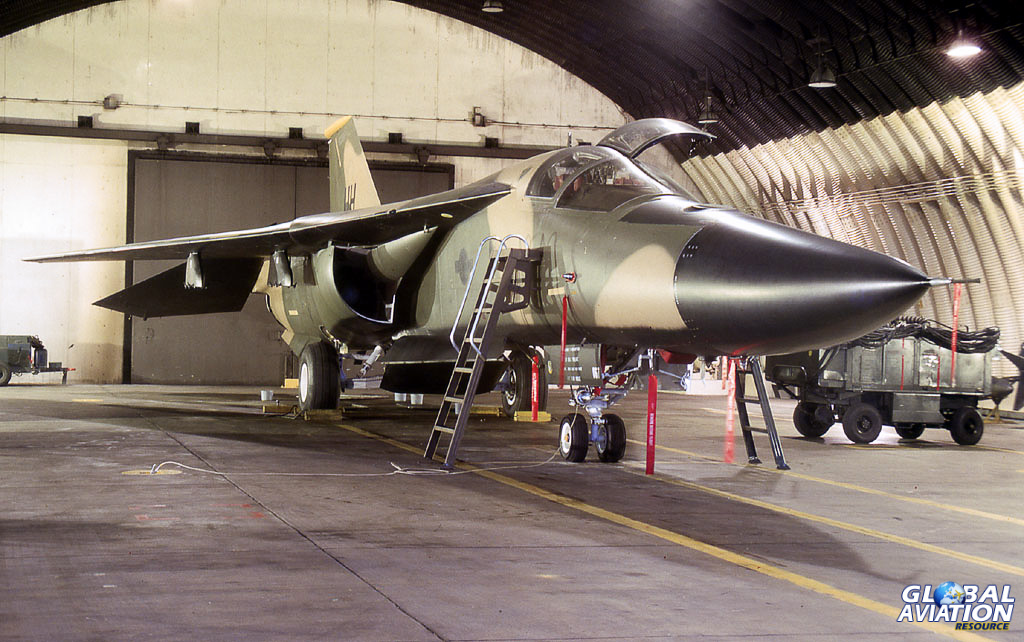
An F-111E in the HAS at RAF Upper Heyford. © Global Aviation Resource – Kevin Wills.
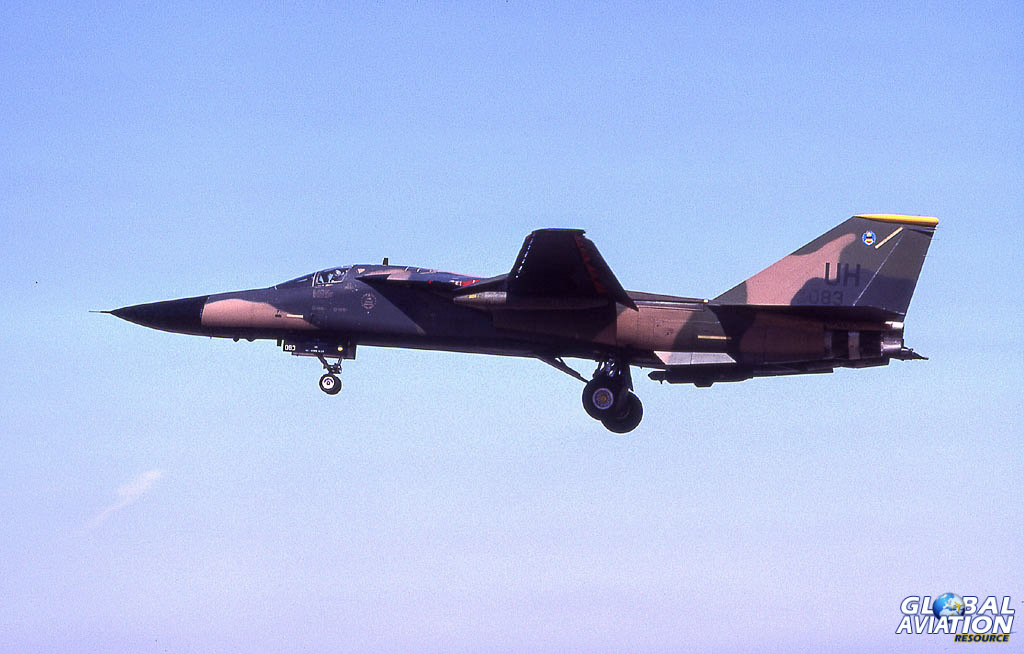
An F-111E of the 79th Fighter Squadron approaches Upper Heyford. © Global Aviation Resource – Kevin Wills.
As someone who had wanted to be a fighter pilot, was the F-111, with its dedicated strike role, what he had wanted? “It had an F in front of it so I thought it was a fighter. I thought the F-111 was pretty cool. Low altitude and high speed!” Speed certainly was available. The E-model was the fastest of the marks. The F models had more powerful engines but the bigger inlets to feed them came with a drag penalty. They also were not as reliable. The E model engines ran pretty well but, as Mike points out, they did have their limitations, particularly when you were aerial refuelling. “At 30,000’ in the E model you were trying to hang on the boom. You would plug the left engine in burner and modulate with the right engine to stay in place.”
Speed at low-level was a tactical advantage. The F-111 was never going to mix it with the fighters. Instead, they would get down low and “scrape the fighters off on a hillside”. They could also make use of the BIF manoeuvre. BIF (or bomb in face) meant dropping a retarded bomb at low altitude to blow up in the path of the chasing jet – obviously not something you could practice easily in peacetime! Another thing that did not happen on a regular basis in peacetime was training with the primary weapon of the unit. As a nuclear strike force, the F-111s were intended to carry the B-61 tactical nuclear weapon. While Mike was on the squadron, the unit was tasked with loading up all of the jets with live weapons to simulate an all-out war. He coordinated part of this exercise and recalls, “I was in charge of the North half of the aerodrome. I think I was the fourth leading nuclear power that night!”
After two years at Upper Heyford, Mike moved on to his next posting. He wasn’t going to leave the F-111 without some sort of flourish though. Out over the sea, he took the jet to Mach 1.05 at under 200’. What the sea looked like behind him as he raced across the water he doesn’t know. “The rearward visibility in the F-111 is not great!” The next type couldn’t have been more different. Visibility improved and speed went way down; it was time to fly the Cessna O-2.
Conversion on to the O-2 was undertaken at Patrick AFB in Florida. The O-2 was used in the Forward Air Control (FAC) role and, when Mike converted on to it, it was in the final years of its service in this role. Mike wasn’t only qualified as a FAC but he also had a parachute jumpmaster qualification which added a star above his wings. This made him a little unusual in the FAC community when he arrived at Shaw AFB – home of his operational unit, the 21st Tactical Air Support Squadron. Shaw is close to Fort Bragg and the training for the FAC role was closely aligned with the Army. Mike was a FAC/Air Liaison Officer to support the 82nd Airborne Division and spent much time flying around at 3,000’-5,000’ armed with rocket pods and flares for marking targets.
“At night, fighters would come on station. You’d drop ground target markers – they’re called logs because they’re really big and they burn bright. You’d put two logs along a path. Everything we did in the O-2 was talking someone’s eyes on to the target.”
The relationship with the Army was not always a smooth one. The Army trained on the assumption that air support could not be relied upon to be there. They would have to build their battle plan such that, if air support didn’t turn up, they could still be successful. Consequently, Mike would find himself trying to persuade the unit commander of the value of the airpower he could bring to the task. “They would say ‘Why should I shut my howitzers down?’ I would say ‘How much does a howitzer shell weigh? Ten pounds of explosive?’ I have got 2,000lbs in each bomb with 1,500lbs of explosive.” This was quite a different role after the high speed and low-level work in the F-111. However, it wasn’t bad. “I would rather have been a fighter guy but it was fun and it was a challenge.”
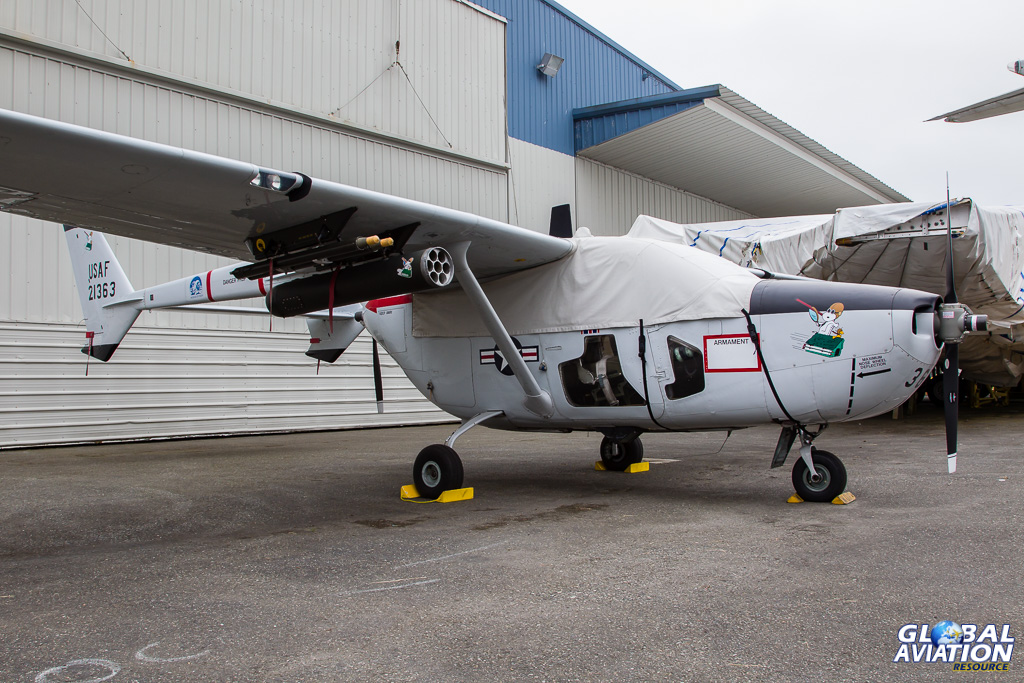
A retired O-2 FAC aircraft stored at Paine Field. © Global Aviation Resource – Rob Edgcumbe

A camouflaged Tweet. © Global Aviation Resource – Chris Wood.

An A-37 on the ramp at Edwards AFB. © Global Aviation Resource – Chris Wood.
Mike was based at Shaw from 1984-88 but in 1987, the Air Force parked up the O-2 fleet. The FAC role continued but the aerial element was gone. The unit acquired a number of T-37s that were used to maintain proficiency. One upside of this assignment was that crews were usually given a choice of what they wanted to be assigned to next. For Mike, the choice was to go to F-16s.
Homestead AFB in Florida was to be his next unit but first he had to qualify on the F-16, which meant heading to Luke AFB in Arizona. Since Mike was already an experienced fast jet guy, he had a shorter course for conversion to type. However, it was not so straightforward for him. The F-16 involved a lot of air-to-air work and, as someone who had flown F-111s, Mike was rather lacking in dogfighting experience. In the F-111, there really wasn’t any dogfighting to be done. Getting away was the main goal! With conversion complete, it was off to Homestead to fly the F-16A from 1988 to 1990. This was the time of the first Gulf War, though the F-16A was not deemed an appropriate asset to send to the Gulf. The F-16C fleet deployed en masse but the A model units stayed back in the US.
It was while based at Homestead that Mike came to a decisive point in his career. He could consider leaving the Air Force and looking for a new line of work, but another option was available. That was heading to test pilot school. He decided to submit his application. The requirements were that the candidate had at least one major weapon system and an engineering or hard sciences degree. He had the degree from the Academy and three weapons systems. “The O-2 was considered a weapons system!” He was applying at the ten year point in his service, which was the last year in which one could apply.
When asked what the application process was like, Mike is suitably understated. “I would like to say it was rigorous but I got in!” There were a few elements that had drawn Mike to the role, when he looks back. He has a natural feel for engineering issues and had been a successful student when at the Academy. “I perceived it as a good fit for me.” When based at Upper Heyford, the BBC had been running a series called Test Pilot on the Empire Test Pilot School. While he hadn’t watched the programme, he had read the accompanying book and it had piqued his interest (later in his career, he would cross paths with a few of the personnel from that series). His flying standards were also good. “I’m not a better pilot than anyone else. I am good, but not better.”
Perhaps the final trigger was that a friend of his from the Academy had gone through a preceding course. “If Benji can get in, I am going to go!” He applied while based at Homestead. The review board met around Christmas and identified candidates for the next step. This was a five flight evaluation. The flights took place at Edwards AFB in the spring of 1990. Using the T-38s of the school’s fleet, Mike saw this as a feeling out process. Could you fly and do you like the type of flying? He could, and did, and was selected for the course starting in July 1990.
There were strengths and weaknesses to the test pilot course. The engineering and flying challenges were interesting. However, there wasn’t much flying. “I only flew under 100 hours that year – the least of my career.” The downsides included lots of work. The rule of thumb was that there would be ten hours of writing for every hour of flying. All of this was offset by “the lure of the high desert” as Mike adds with a smirk! The work was intense but not unmanageable. He recalls plenty of fun with the course, but there are also examples of how much it could take over. “I remember one night I am handwriting my report when BOOM! What was that? Oh, the Shuttle’s landing. I’ve got to get back to work.”
Mike had a number of classmates that he knew from the Air Force Academy. If he looks through the list of those on his course, there are a whole bunch of names of people that have made General or are now running flight test programs for major manufacturers. He has friendships from that course that have endured. The course itself was carried out in three phases. First was Performance, second was Handling Qualities and finally Test Management. Mike got to fly a variety of cool jets while he was there. For his evaluation of an airframe, he and another student were sent to fly the U-2. They only got one flight each but the chance to suit up in the space suit and fly to 70,000’ was something he enjoyed having the opportunity to do. Having already flown gliders early in his career, he found a lot of similarities with his past experience. “When you are up at 60-70,000’ and you want to get down, what do you do? You drop the gear. It is a 2.5g airframe so you just spiral down, spiral down and spiral down some more!

A test fleet F-4 at Edwards AFB. © Global Aviation Resource – Rob Edgcumbe
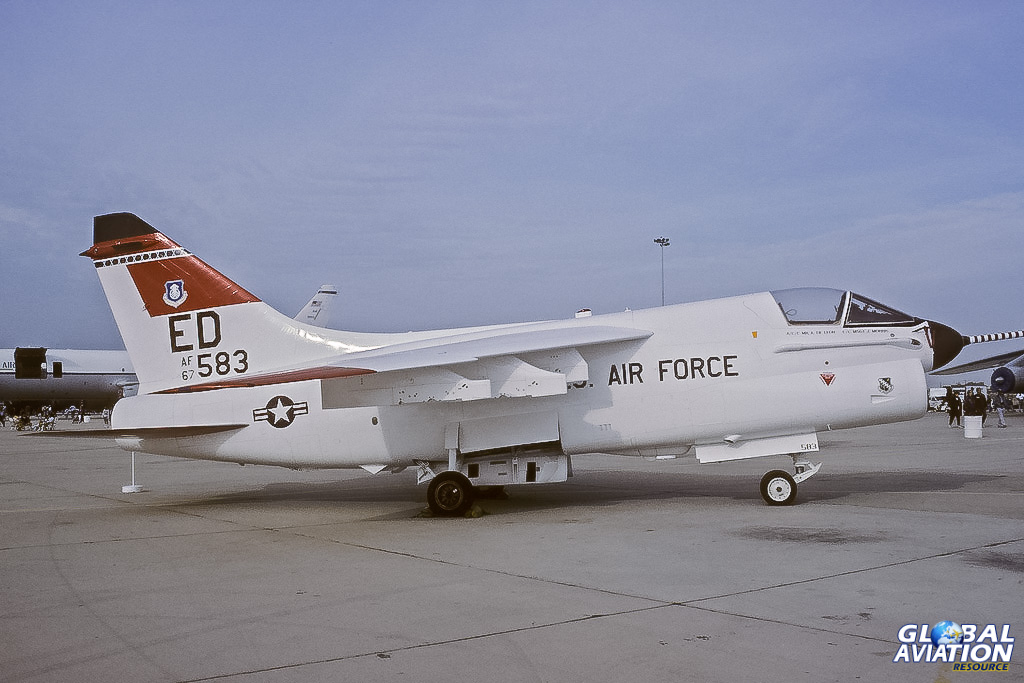
An A-7 Corsair II at Edwards AFB. © Global Aviation Resource – Chris Wood.
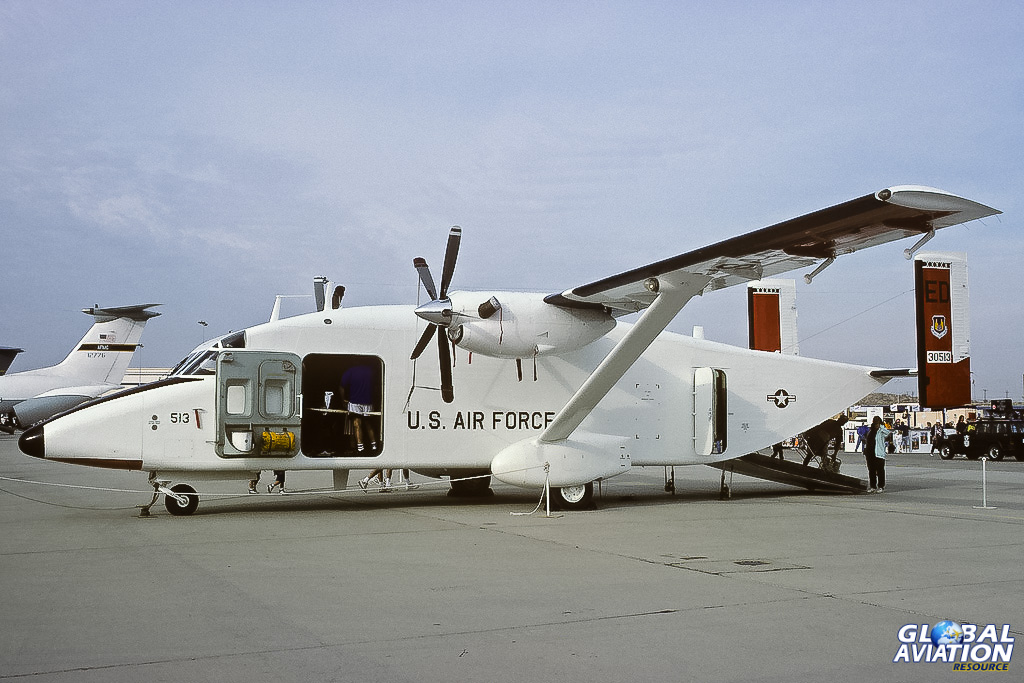
A Shorts C-23 Sherpa of the Edwards test fleet – not one of Mike’s favorite planes! © Global Aviation Resource – Chris Wood.
“I also got checked out in the F-4. That was cool. It was like going back in time. It was dirty, smelly, big, nasty. A real fighter!” At that time, the F-4 was still a big part of the test fleet at Edwards. The stick had a Q bellows feel system based on dynamic pressure so it didn’t have any resistance when the jet wasn’t moving. “It would flop until you accelerated then whack.” Something to be careful of! Also, the aircraft were fitted with an old seat from Martin Baker. “They might make a pretty good seat but there are more steps for getting strapped in to that seat than the Space Shuttle.”
A real high point of the course was the opportunity to fly the A-7. The flights were in the single seater. “An instructor would stand on the step and help you start it. Then he would jump of and get into his jet and start up.” The first flight was a check ride and the second flight was a departure ride. “It was a challenge taking notes in a plane you had only flown for an hour.” Chuck Yeager was still a regular feature at the time Mike was at Edwards. He would come down periodically to remind everyone who the Alpha Male was. Mike got to fly with him once too. Their flight took place on a windy day and, when they were ready for departure, the wind was out of limits. The runways at Edwards are very wide. “Yeager said, ‘In my day, we would line up at one side of the runway at an angle and then take off’. I said ‘You might be able to get away with that General, but I doubt I will’. He said ‘You are probably right!’”
Upon graduation from test pilot school, there are two choices – stay at Edwards or go to Eglin. Mike was not keen on the type of flying involved at Eglin so opted to stay at Edwards. The allocation of pilots to test groups is pretty much based on where you have come from; “If you are an F-16 guy, you will fly F-16s unless you really don’t want to.” However, the first thing you will get assigned to is Test Ops. This involves a lot of things like flying photo chase. Mike describes this as “Test Pilot Purgatory!” He really wanted to get out of this so, when the F-16 Test Force had an opening in the Aeromechanical Division, he did all he could to get it.
This was more like classical flight test. He was doing performance testing on the Pratt and Whitney F-100-229 engine, high angle of attack testing, deep stalls and so on. The big version of the Pratt engine involved a lot of testing. Unlike the GE engine, which had always been rated at 29,000lbs, the Pratt engine could be fitted to jets with the big or little inlet. The GE engine had a bigger fan to give it more thrust and needed more air, hence the big inlet. The Pratt motor was basically turning up the wick to get the thrust so it could use the smaller inlet (which had less drag). On one test point Mike found himself at 5,000’ at about close to 800kts with 7.5g on the airframe and it just kept accelerating. It was a powerful engine, although the reliability did seem to suffer from it having been pushed harder to get the thrust.
Mike was on the test force for two and a half years, the last year and a half of which was focused on the Multi Axis Thrust Vectoring (MATV) programme. MATV was one of three programmes that were underway broadly simultaneously involving exploration of thrust vectoring in enhancing manoeuvrability. NASA had an F/A-18 High Alpha Research Vehicle (HARV) – known colloquially as the Silk Purse – modified with paddles in the exhaust, the US Navy was working with Germany on the X-31 programme and the Air Force had MATV.
The origins of the programme came from General Electric. They had modified an F-110 engine with a nozzle that could be controlled to vector the thrust in any direction by up to 17 degrees. The nozzle was called AVEN (Axisymmetric Vectored Exhaust Nozzle). It used the same basic hardware as the production nozzle but decoupled the A8 and A9 linkages which control the variable area of the nozzle. This allowed the vectoring of the nozzle angle. Initially the idea had been to test the nozzle in partnership with Israel but, when that fell through, Wright Labs picked up on the concept. For a long time the programme looked like it wouldn’t happen so, when Mike was assigned to it, he didn’t think it would ever result in anything.
Lockheed were keen for the programme to go forward and GE wanted the nozzle to be flown so, with Wright Labs providing the funding, things started to come together. The airframe that was to be used was the VISTA F-16. This is a two seat jet with the extended spine to house additional avionics. It was conceived as a variable stability jet for test flying purposes and was modified by Calspan. When the jet was finished and testing was complete, funding ran out and it was stored. It was the ideal basis for MATV.
Acceptance flights were carried out at Fort Worth and then the jet went to Edwards. Unlike the HARV and the X-31, the MATV was still an operationally configured jet. It had the radar and weapons systems so was able to carry out evaluation of combat effectiveness. The goal was to clear the basic configuration differences, undertake envelope expansion and then hand the jet to the 422 TES for the team to evaluate its impact on operational performance.

An Edwards T-38 after landing at Edwards AFB. © Global Aviation Resource – Chris Wood.

The AFTI F-16 on the ramp at Edwards AFB. © Global Aviation Resource – Chris Wood.

The AVEN nozzle of the MATV during a ground run. Lockheed Martin Photo by Tom Reynolds.
The two seat configuration meant it was possible to demonstrate the aircraft to interested parties, but it also allowed a very flexible approach to flight testing. The aircraft commander was in the rear seat with the front cockpit configured for the test flying. There were three modes in which the aircraft could be flown. Normal mode was just like a normal F-16 with the nozzle locked aft. Vectoring mode would allow the nozzle to move only for recovery from deep stall conditions. Full vectoring mode had the nozzle fully integrated into the control system. The pilot had no direct control of the nozzle – it was the flight control system that determined the combination of control surfaces and nozzle positions.
The gains in the controls could be varied in flight – a benefit of using the VISTA airframe as the basis for MATV. Consequently, after each test point, it was possible to modify the controls and run another point. Combined with the availability of tanker support, this meant that a lot of testing could be accomplished with each flight and the envelope could be expanded very effectively. Much attention had been focused around this time on the arrival of the Russian MiG-29 and SU-27 at airshows when they carried out tail-slides and the Pugachev Cobra manoeuvres. The MATV was able to undertake similar moves but it was remaining fully controllable throughout rather than going “open loop” once the manoeuvre started.
Not everything would always go smoothly. This was, after all, a test programme. The aircraft might depart at high angles of attack if the sideslip built up. However, you could then change the controls to limit sideslip at those angles and re-fly the point with success. This was classic test flying! Some of the problems were more significant. On one flight, Mike lost the engine. The nozzle was powered by engine oil and an additional oil cooler was provided to avoid overheating. The cooler split, causing the nozzle to “stove pipe”. The engine continued to run but, without the nozzle convergent/divergent shape being managed, the thrust was lost. Mike was able to glide the aircraft in without any further damage. “Joe Sweeney, Chief Lockheed Project Pilot, was flying a test point from the rear seat when the engine failed. As I was in the front seat, Joe gave me the aircraft to perform the flame out landing. As luck would have it we were nicely positioned to fly the approach to RWY22, Edwards’ main hardstand runway. The approach went well, and after touchdown we had enough energy to roll to the end and turn off into the hammer head area. You could see a trail of oil all down the runway and taxiway. After the jet was towed back to the ramp, they took off the engine panels to see if they could find the leak. While there was oil everywhere, no source could be found. Only with the engine running and oil system pressurised did the hairline crack in the additional oil cooler show itself.”
With the envelope expansion testing completed, the jet was handed over to the evaluation guys. They flew 1v1 and 1v2 sorties to see what the impact of the thrust vectoring would be. Initial thoughts were not impressive. In the 1v1 sorties, the MATV was a bit heavier than a standard F-16 and didn’t have a significant advantage. There was concern in the team that it might not have been worthwhile. However, once the 1v2 sorties started, the aircraft shone. “Coming into the merge, with the adversaries in a line abreast tactical spread, you would pass one of them close aboard. Then you could go post stall, and pop the wingman with a heater. Now you were 1v1. As the leader manoeuvred to engage, you could regain the energy you had lost and meet him head on with a similar energy state.”
The MATV program proved a number of points. It took two existing products in the F-16 and the F-110 engine and modified them to produce a significantly enhanced product. They undertook extreme manoeuvres such as hammerheads, post stall loops and helicopter turns repeatedly and under complete control. “If you are willing to accept the engine as a control surface, you can remove other surfaces. If I lose the engine, I am punching out anyway!” This doesn’t even harm your thrust. The loss in longitudinal thrust is negligible as a quick use of Pythagoras theorem will tell you! The idea of retrofitting the capability was mooted at the time. Both Lockheed and GE were certainly interested. The Air National Guard was also interested in enhancing their jets. However, the Air Force was more focused on the F-22 and what would ultimately become the F-35, so they were not supportive of upgrading the F-16 in this way. MATV was ultimately going to remain a single jet programme.
Upon completion of his time on the F-16 Test Force, Mike went back to the test pilot school to teach for another 18 months and then he decided to retire from the Air Force. Ironically, given how things have turned out, Mike says “I never wanted to be an airline pilot.” He did become one, but not via the normal route. Rather than line flying, Mike joined United Airlines as an engineering test pilot. Based out of their San Francisco base, Mike got his Flight Engineer rating and was rated as a Captain on six different types simultaneously. He was qualified on the Boeing 727, Boeing 737, Boeing 747, Boeing 757/767, Boeing 777 and McDonnell Douglas DC-10 and was current on all of them at the same time.
The role of the test cell at United was to carry out check flights, test flights of jets pre and post-overhaul activities, undertake diagnostic flying and to carry out verification flights post any rectification work. In addition, if any aircraft had half or more of the engines changed, they would test fly it. They also would undertake engine out ferry flights on occasion. “Anywhere with a big ‘plane you are going to be able to replace a motor. But, you’re going to be out of service longer and once it was back in service it would be out of sequence, so it would have to be ferried back. It kind of killed two birds with one stone.” His first 747 engine out ferry was from Narita. The take-off was at night and with an outboard engine out. This is the worst case since the asymmetric thrust is maximised. Take-off involved spooling up the inboard engines to full power and then, as the jet accelerates down the runway, feed in the remaining outboard engine as the rudder effectiveness increases.

A United 747 at Narita. © Global Aviation Resource – Chris Wood.

A United DC-10 rolls out on landing. © Global Aviation Resource – Chris Wood.
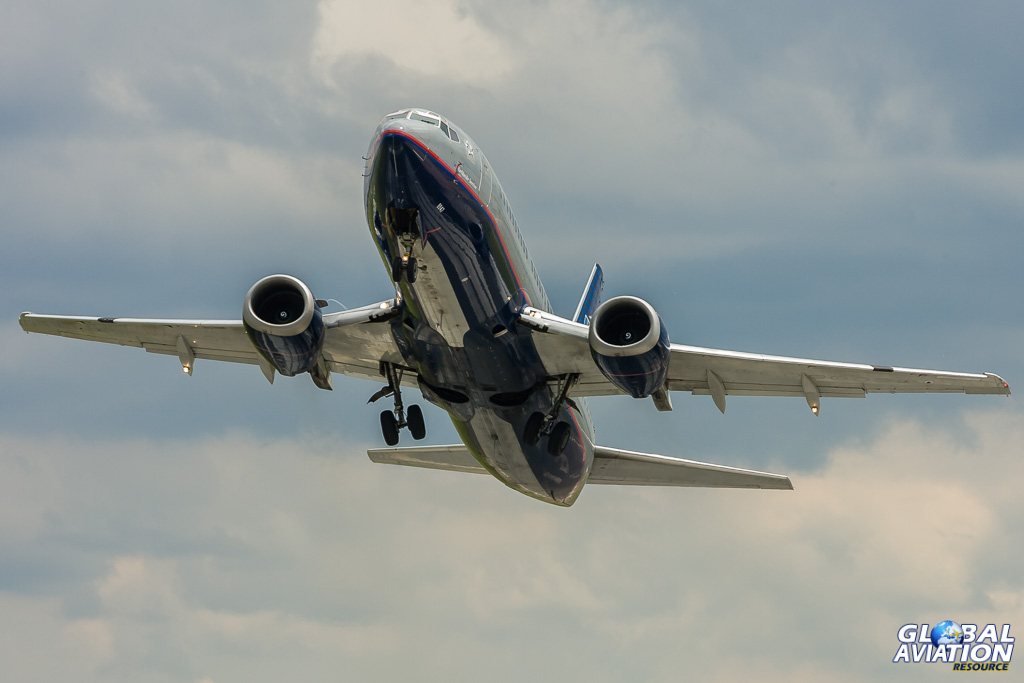
A United 737-500 climbs out of Washington National. © Global Aviation Resource – Rob Edgcumbe.
One particularly interesting task that came up at United was the SOFIA programme. NASA was looking to replace its airborne telescope. Their previous jet was a modified C-141 Starlifter known as the Kuiper Airborne Telescope and they were replacing it with a modified Boeing 747SP. United was a partner in the programme and was donating the airframe as well as planning on providing the flight crews. The aircraft was modified by L3 in Waco, Texas and, prior to carrying out the modifications, some test flying was required to map the stresses in the fuselage where the telescope aperture would be added. Mike acted as co-pilot on the test programme. Ultimately, United backed out of providing the flight crews and it is now crewed by NASA.
This job was a managerial role in United Airlines and did not involve any line flying. Shortly after 9/11, the unit laid off a couple of pilots and in 2004 two more had to go. Mike was one of them, partly due to seniority and partly as a result of him not having an Airbus rating at a time when a couple of his jets were withdrawn from service. Since he was not a line pilot, he had no direct opening in the airline. It was time to find another job. He quickly joined Boeing down in Long Beach flying C-17s. The programme was already running down and the plan was to be there for a year before moving up to Seattle. However, Mike and his wife had started a family and the move to Seattle did not fit with their overall plans, so he decided not to move North when the Long Beach work wrapped up. Instead, he joined Southwest Airlines.
Starting with them at 47 was an odd experience. He was flying in the right seat and pulling the gear for someone much younger than himself. They were fully qualified and experienced but it was quite an adjustment. He soon got into the flow of the work. As he says, “The good thing about flying for Southwest is you always do the same thing. The bad thing about flying for Southwest is you always do the same thing!” Mike has recently made Captain (again) and currently flies out of Oakland.
In parallel with his commercial flying work, Mike has an interesting sideline he keeps up with. During his time on the MATV programme, he made a presentation on the programme at the Society of Experimental Test Pilots symposium where he met Guy Norris who was, at that time, with Flight International. They maintained contact and, when Flight needed someone to carry out a flight evaluation on the Boeing 717, Mike got a call. He was available on the day the jet was being provided so he headed off and flew it. The article was well received so he got another assignment – this time for the C-130J at Marietta, Georgia. The third job was with the Aero Vodochody L-159 in Prague – his first chance to get back into a fast(er) jet.
He has now produced over 100 articles for Flight. He continues to undertake flight evaluations for them covering everything from light aircraft through corporate jets to major airliners. Flights are often with demonstration pilots but not always. “Some manufacturers fly you with a test pilot so you can see more unusual aspects of the jet.” Mike has been able to discuss some of the configuration issues with the larger airliners with the flight test managers and have them demonstrate the behaviour of the jet with the “fixes” in place and switched off. Modern aircraft are generally pretty good so the evaluation flights do not tend to show up major problems.
Mike will continue airline flying for a few more years. Meanwhile, he takes every opportunity to evaluate new types. While his experimental test flying days may be over, he still gets a kick from flying something different. Given the variety of things he has flown over time, you would imagine not much would seem special these days, but that certainly doesn’t seem to be the case based on spending time with him. Look out for his evaluation articles in the future!
The author would like to thank Mike for the extensive time he made available in the preparation of this article.



